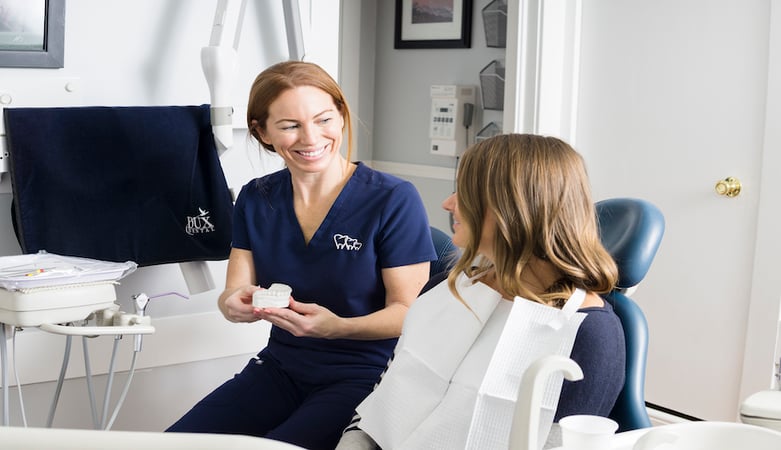
The dental chair can be a pretty scary and vulnerable place for patients. Creating a comfortable and reassuring environment during appointments is crucial. Think about an experience where you didn't get the best of service. Did your return back? The chances are you most likely did not. As dentist we want to make sure we are creating a space where clients feel that they can trust us. I have come up with five keywords that can dentist should avoid to help minimize patient anxiety:
1. “FAIL”
There’s no reason to look at a patient who has had a bridge in place for 20-some years and say, “Your bridge has failed!” It’s a scary statement, and it doesn’t make sense! Even cars don’t last for 20 years. Instead, use the word “replace.” Replacing the word “failed” with “replace” explains in one word that this patient’s situation is normal, there’s no reason to be scared, and we have a solution! This simple change in terms will leave the patient feeling relieved rather than scared because they’ll know that there is an immediate solution to their completely normal problem.
2. “VIRGIN”
In dental school, learning dentists are taught that if a tooth doesn’t have a filling, call it a “virgin.” As a patient, you’re instantly thinking “ew!” As a dentist, you’re uncomfortable saying it. Instead, if a tooth doesn’t have a filling, just call it “a tooth without a filling.” A patient doesn’t need a term for the situation of their tooth to understand it. They should be made to feel more comfortable in the dental chair, not more awkward!
3. “SAVE”
A patient might hear their dentist casually say, “We can’t save this tooth.” Like it’s Private ‘pre-molar’ Ryan and Tom Hanks is coming to save it. To the patient, this is not a causal phrase at all. It’s scary! Try saying, “We can not maintain this tooth,” instead. Dentists naturally become desensitized to the terms that they use in the office, resulting in a language gap between dentists and patients. Just changing the word “save” to “maintain” will leave the patient feeling more comfortable because it suggests that their dentist already has a solution!
4. “INFORMED CONSENT”
Approaching your patient saying, "you have a right to informed consent” is way too dramatic! Call it a “heads up” instead. The written form itself can say “informed consent.” But, verbally translate that to “I’m going to give you a heads up on what’s going to happen here.” Or, “Here’s a heads up on some things you should know about your procedure.”
5. “POLICY”
The dreaded “P Word.” Dentists don’t like using it, and patients don’t like hearing it! Call it a “protocol” instead! A policy is a principle, whereas a protocol is a course of action. When a patient hears the word policy, they expect a bunch of dental terms they’ll have to try to decipher. Patients want to know that their dentist has a quick solution and that there’s a correct procedure for it. When you feel yourself starting to use the dreaded “P Word,” use the happy “P Word.” Don’t say policy, say protocol!
By selecting more positive and less anxiety-inducing language, dentists can help their clients feel more at ease!
Related News Articles

Have you ever wondered how we take a dental practice owner looking for help, a dentist eager for an...

Valentine’s Day is here, which means we are thinking about all things related to finding you your...

Everybody loves a happily ever after story, whether it takes place in a magical land far far away,...

Dentistry is one of the few fields of study where what we create, as practitioners, is physical in...
-1.png?width=50&height=50&name=Job%20Connect%20Logos%20(1)-1.png)